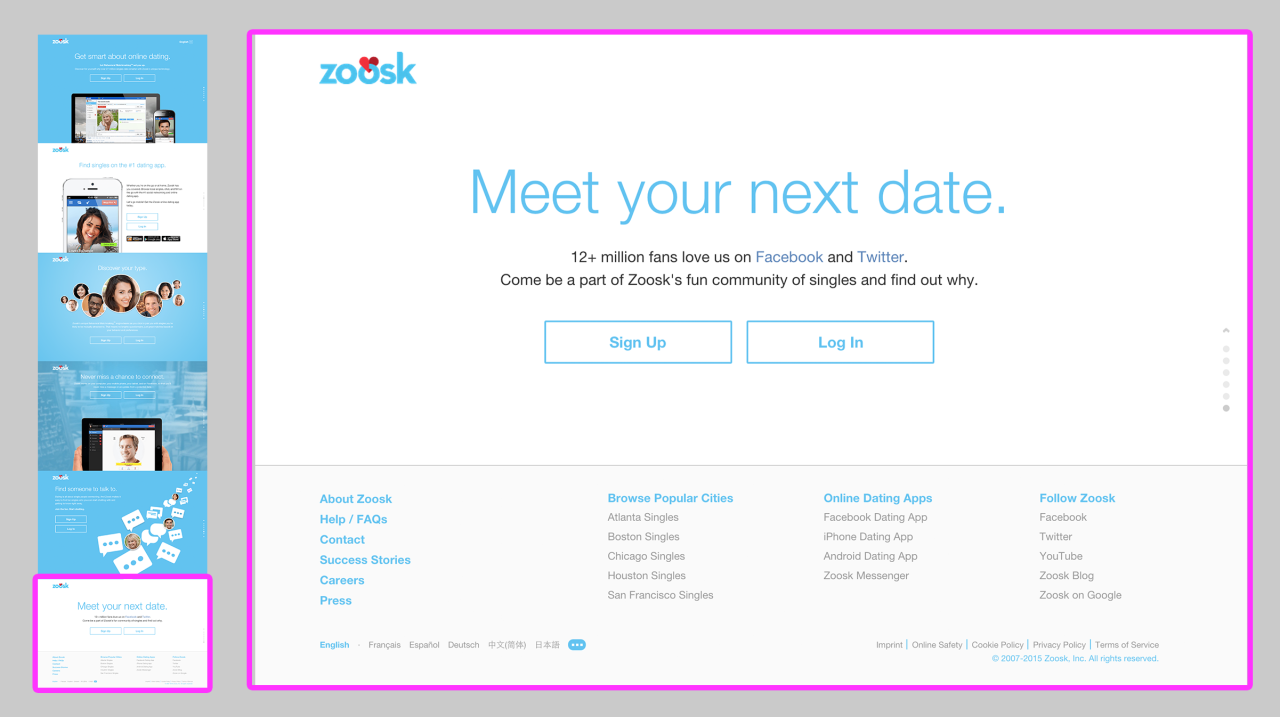If you’re using Zoosk, you might come across a feature called Meet Requests. But what happens when someone wants to meet you on Zoosk? Understanding how this feature works can help you navigate the platform more effectively and make the most of your online dating experience.
In this comprehensive guide, we’ll explore what happens when someone sends you a Meet Request on Zoosk, how to respond, and provide tips for using this feature to your advantage. By the end of this article, you’ll have a clear understanding of Zoosk’s Meet Requests and how to use them to find meaningful connections.
What is Zoosk?
Zoosk is one of the most popular online dating platforms, with over 40 million users worldwide. Launched in 2007, Zoosk is known for its behavioral matchmaking technology, which learns from your actions (such as the profiles you view and like) to suggest compatible matches.
The platform is designed to be user-friendly and versatile, making it a popular choice for singles of all ages. Whether you’re looking for a serious relationship, casual dating, or just making new friends, Zoosk offers tools and features to help you achieve your goals.
Understanding Zoosk’s Meet Requests
Zoosk’s Meet Requests feature allows users to express interest in meeting someone in person. Here’s how it works:
1. Sending a Meet Request
When someone is interested in meeting you, they can send you a Meet Request. This is a way for them to express their interest in taking the relationship offline and meeting face-to-face.
2. Receiving a Meet Request
If someone sends you a Meet Request, you’ll receive a notification. You can then choose to accept, decline, or ignore the request.
3. Responding to a Meet Request
If you’re interested in meeting the person, you can accept the request and start planning your meetup. If you’re not interested, you can decline the request or simply ignore it.
What Happens When You Accept a Meet Request?
When you accept a Meet Request on Zoosk, several things happen:
1. You Can Start Planning Your Meetup
Once you accept a Meet Request, you can start planning your meetup. This might involve exchanging messages to decide on a time, place, and activity.
2. You Can Continue Communicating on Zoosk
Even after accepting a Meet Request, you can continue communicating with the person on Zoosk. This allows you to get to know each other better before meeting in person.
3. You Can Use Zoosk’s Safety Features
Zoosk offers several safety features to help you stay safe while meeting someone in person. These include profile verification, photo verification, and the ability to report suspicious activity.
Tips for Using Zoosk’s Meet Requests Effectively
Here are some tips to help you make the most of Zoosk’s Meet Requests:
1. Be Honest About Your Intentions
If you’re not ready to meet someone in person, be honest about your intentions. It’s okay to decline a Meet Request if you’re not comfortable or ready.
2. Take Your Time
Don’t feel pressured to accept a Meet Request right away. Take your time to get to know the person and make sure you’re comfortable before agreeing to meet.
3. Use Zoosk’s Safety Features
Zoosk offers several safety features to help you stay safe while meeting someone in person. Make sure to use these features and follow best practices for online dating safety.
4. Plan Your Meetup Carefully
When planning your meetup, choose a public place and let a friend or family member know where you’re going. This can help ensure your safety and give you peace of mind.
Frequently Asked Questions (FAQs)
1. What happens when someone wants to meet you on Zoosk?
When someone wants to meet you on Zoosk, they can send you a Meet Request. You can then choose to accept, decline, or ignore the request.
2. How do I respond to a Meet Request?
If you’re interested in meeting the person, you can accept the request and start planning your meetup. If you’re not interested, you can decline the request or simply ignore it.
3. Is it safe to meet someone from Zoosk in person?
Zoosk offers several safety features to help you stay safe while meeting someone in person. Make sure to use these features and follow best practices for online dating safety.
4. Can I continue communicating on Zoosk after accepting a Meet Request?
Yes, you can continue communicating with the person on Zoosk even after accepting a Meet Request.
Read More: Can You Block Someone from Seeing Your Profile on Zoosk? A Guide to Zoosk’s Privacy Settings
Conclusion
So, what happens when someone wants to meet you on Zoosk? When someone sends you a Meet Request, you can choose to accept, decline, or ignore the request. If you accept, you can start planning your meetup and continue communicating on Zoosk to get to know each other better.
By understanding how Zoosk’s Meet Requests work and using them effectively, you can enhance your online dating experience and increase your chances of finding meaningful connections. Whether you’re looking for a serious relationship, casual dating, or just making new friends, Zoosk offers the tools and features to help you achieve your goals.




